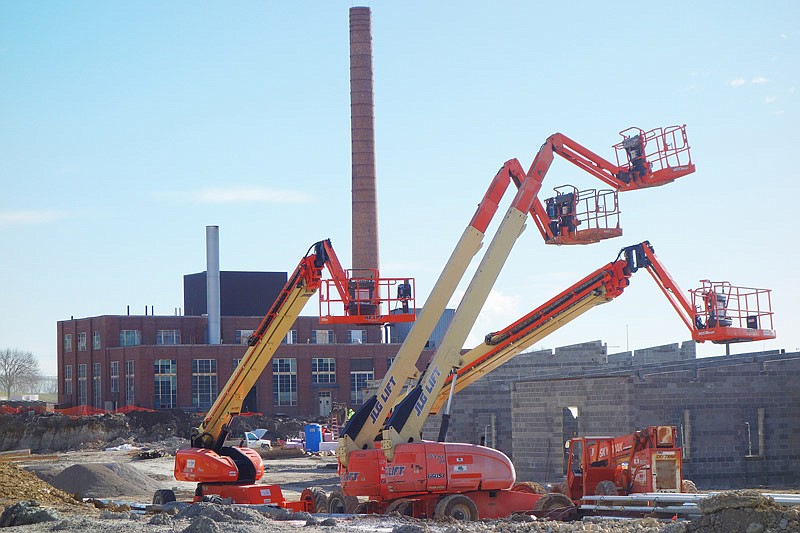Outdated buildings at the Fulton State Hospital led to high upkeep costs and dangerous conditions for workers, according to a Fulton State Hospital Rebuild Project document. A few years ago it became clear the facility was in desperate need of an update.
This month, with construction well underway and on track for an October 2018 completion, the final piece of funding arrived from the state in the form of $97.2 million in bonds. That's nearly half of the estimated final cost of $211 million.
"The approval of the spending to build this came from a bipartisan effort from the governor and the Legislature," said Project Manager Drew Henrickson.
The first new building, a $25 million energy control center and services building which replaced the old Central Boiler Plant, was completed in June.
Even more vital to the FSH will be the new, $140 million maximum and intermediate security complex. It will have room for 300 psychiatric patients, food services, recreational and vocational activity space and staff training rooms.
"The new hospital building is about 20-25 percent complete," Henrickson said.
It replaces the old Biggs facility, which will be torn down upon the new complex's completion.
"Due to the poor design of the Biggs facility, making line-of-sight supervision difficult, and due to the increasingly dangerous behaviors of the psychiatric patients at Biggs and Guhleman, employee overtime at FSH costs $3.7 million annually," a 2013 summary document about the project stated.
As of 2013, FSH was paying out some $4 million in workers compensation per year and was judged a more dangerous workplace than Department of Corrections facilities, the same document stated.
"The new facility is set up so that a person can stand at one central point in the living unit and just turn their head a little bit and see down every hallway," Henrickson said. "We have a lot of cameras, a lot of video surveillance, and door access control so you can open a door from afar."
He also mentioned that corridors and a second story above the living areas will mean that maintenance people will rarely have to venture into patients' living areas.
The new facility will free up an existing intermediate security building, Guhleman West, which will be used to house additional patients in the Sexual Offender Rehabilitation Treatment Services program. Currently, SORTS patients are in the maximum security Guhleman East building, which will continue to be used for that program.
"The Office of Administration is incredibly proud of our state employees, project consultants, and contractors for undertaking a project of such magnitude, and we are very pleased with the work we have seen thus far," Office of Administration Commissioner Doug Nelson stated. "The replacement of this aging facility with a safer more modern mental hospital will benefit every community of the state."
The construction is already benefiting some local businesses. Fulton's own Mid America Pre-Cast and MO-Con Inc. are providing concrete for the project, and Truescape is doing landscaping.
While the new facilities are being completed, patients are staying in the old facilities.
"The patients are currently in hospital buildings," said mental health department spokesperson Debra Walker. "None of the buildings the patients are currently in have been demolished."
Henrickson said construction is progressing smoothly, and the timeline is similar to that of other large psychiatric hospital construction projects.
"A psychiatric hospital has so many high-tech type systems that need to be not only installed but also tested," he explained. "A commissioned authority will test all mechanical and security systems."
After the former power plant is demolished, all the buildings of the old quadrangle will be gone, Henrickson said. However, the campus will incorporate a new circular park area, just like the original campus, first established in 1851.
"The park area has been a site of community events for many generations," Henrickson said. "It's an important connection to the community."


